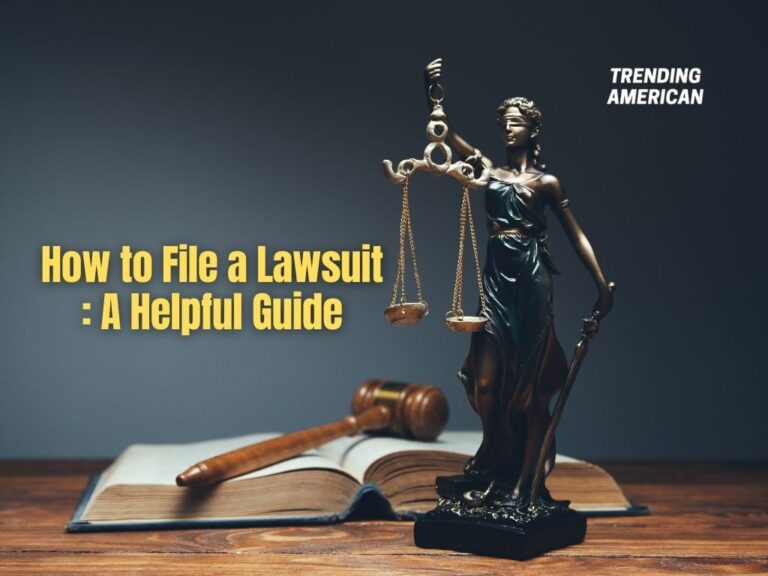Lean Muscle vs. Bulk: Which Look Is Best for You?
The fitness industry is worth nearly $100 billion worldwide. Considering how good exercise is for the body and the mind, it’s no wonder.
But if you’re new to gym life, you may wonder: when it comes to lean muscle vs bulk, which is better for me? Your ability to build lean muscle or bulk muscle depends on multiple factors, which we’re talking about next.
Want to know how to get the lean or bulky body of your dreams? Then keep reading for everything you need to know.
What Is Lean Muscle?
We talk a lot about “bulking up” and “getting lean” in gym culture. But what exactly do these terms mean? Is there such a thing as lean muscle and bulk muscle?
Lean muscle is all muscle. That’s because “lean” means lacking fat.
So when we talk about getting lean, what we’re really referring to is lean body mass. Lean body mass is the total weight of your muscles, bones, and organs, minus fat mass.
To get lean, you’ll want to reduce as much fat on your body as possible while also building muscle.
What Is Bulk Muscle?
Bulk muscle is a misnomer because, again, all muscle is lean (i.e., fat-free). What we actually mean by “bulk” is a bulkier-looking body. Bulky bodies have higher fat content, greater total muscle mass, and lower lean body mass.
To bulk up, it’s best to focus on gaining as much muscle mass as possible. Don’t worry too much about cutting fat, especially if you have a naturally smaller body type.
Factors That Affect Your Ability to Build Lean Muscle vs. Bulk Up
Not everyone can look lean, just as all people aren’t suited to a bulky body. Why is that? It has to do with multiple factors, including your body type, the type of exercise you enjoy, and your diet.
Learn more about these three factors and what they mean for your muscles below.
Body Type
Body type refers to how much body mass you have. This includes the size and weight of your bones, organs, and everything else that makes you up.
Genetics determines body type. So, understanding your body type can help you decide whether bulking up or leaning out will work for you. There are three different body types:
- Ectomorphic
- Endomorphic
- Mesomorphic
Ectomorphs have smaller frames, fast metabolisms, and a naturally low body fat composition. People with ectomorphic body types may have trouble gaining fat and putting on muscle. If that sounds like you, it’ll be easier for you to get lean than bulk up.
People with endomorphic body types have larger frames, faster metabolisms, and a naturally higher body fat composition. Endomorphs may have a hard time losing fat, but they can put on muscle easily. This means an endomorph can more easily bulk up than get lean.
Mesomorphs are somewhere in between these two body types. People with mesomorphic bodies can gain fat and muscle equally well. Having a mesomorphic body type makes it easier to choose between lean muscle or bulk muscle.
Strength vs Conditioning
As you may recall, there are two general types of exercises: aerobic and anaerobic exercise.
The goal of aerobic exercise (AKA conditioning or cardio) is to increase your heart rate and breathing. Anaerobic exercise is also known as strength or resistance training. Its goal is to progressively overload the body to build muscle.
What these two exercises have in common is that they both burn fat. The more muscle you have, the higher your metabolism and the more fat your body needs to burn for energy. Cardiovascular exercise directly requires energy, which is why it tends to burn up fat faster than weightlifting alone.
If you spend a lot of time doing aerobic exercise, odds are you’ll be leaner than someone who mostly lifts weights. And vice versa: focusing on strength training will help you bulk up where cardio never will.
Diet
You are what you eat. And never is that truer when you consider that your diet fuels your body. What you eat will determine whether you get bulky or lean out.
For example, if you eat a lot of protein, you may be prone to bulk. Why? Because building a lot of muscle requires more protein than your muscles use for growth and repair.
Similarly, getting lean requires fat loss without weight loss. If weight is just the sum of fat and muscle, that means you want to shed fat without losing muscle.
To get lean, you’d want to eat a diet rich in proteins, carbs, and healthy fats. But, at the same time, your diet should be low in calories. Fat loss requires a slight caloric deficit, meaning you’re consuming fewer calories than you use.
How to Grow Muscle and Stay Lean
Have you decided that the lean look is right for you? Then check out our top tips for getting and staying lean for life.
A Low-Calorie Diet
Even though you want to lose fat, you don’t necessarily want to lose weight. That’s because weight is actually the combination of fat, muscle, and all the other components that make up your body.
Instead, your diet should support fat loss while also fueling your body with the protein, carbs, and fats it needs to build muscle. Reach for highly nutritious foods with lower calorie contents, including:
- Fibrous fruits and veggies like broccoli, spinach, and bananas
- Lean meats like turkey, white meat chicken, and fish
- Non-starchy, complex carbs like sweet potatoes, quinoa, and brown rice
These foods are known as calorie-dense foods. They’re relatively low in calories per pound but contain a lot of nutrients. That means you’ll feel fuller and fueled for longer off these foods.
If you’re already relatively lean, it’s best to keep eating how you eat already. Add in a few sessions of resistance training per week, and you’ll build muscle without losing additional fat.
Add Resistance Training
If you want to build muscle and stay lean, the best strategy is to lift lighter weights for increasingly more reps. Here’s why it works.
We build muscle through progressive overload. Progressive overload means that you increase the number of reps or lift increasingly heavier weights over time.
The former method is ideal for getting lean. Why? Because doing more reps isn’t just working your muscles — it’s also raising your heart rate for longer, which can help burn more fat.
In fact, you don’t even have to lift weights to see lean muscle gains. Lifting weights may make you hungrier, upping your caloric intake and reducing your ability to lose fat.
When you choose to lift lighter weights or use your body weight, you’ll build muscle without increasing your body’s energy requirements. Of course, don’t forget to add a few more reps each workout session.
Up Your Cardio
A great way to boost fat burning and lean out is to incorporate conditioning exercises into your weekly routine. Aerobic workouts burn a lot of calories, which can help you cut fat. Plus, they’re great for your overall health.
Here’s the thing, though: high-intensity cardio workouts can increase your energy requirements. That means you’ll be hungrier after a workout. Potentially, this could lead to fat gain instead of your desired fat loss.
Focus on lower-intensity workouts to get lean. Walking is an excellent way to get in your cardio without upping your appetite. Even better, there’s some evidence that our bodies burn more fat during low-intensity exercise.
How to Bulk Up
If you prefer the bulky look, we’ve gathered some top tips for your journey. Check them out next.
Eat a Highly-Nutritious Diet
When you’re bulking up, you don’t need to change your diet much. After all, your goal is to look bigger. Losing fat will automatically make your muscles look smaller, no matter what body type you have.
The more energy you consume through food, the faster your body can recover from a workout. Similarly, the more protein you eat, the better your muscles can repair themselves after a workout.
Focus on fueling your body with the protein, carbs, and fats it needs. Protein will help repair your muscles after tearing them during weight training. Carbs will give your body the energy to go all out during your workout.
Healthy fats are your best friend when bulking up. Not only will fat make your frame look larger, but it also helps protein perform its essential muscle-building tasks. Plus, healthy fats energize your brain cells to keep you focused on your training session.
The best diet tip for bulking up is to go for calorie-dense foods. But keep an eye on your saturated fats and added sugars. These ingredients can slow you down during a weight lifting session.
Up Your Weight Training
We’ve already discussed the concept of progressive overload, but here’s a quick refresher. Building muscle requires you to gradually increase the weights you lift or the number of reps you perform.
Progressively lifting heavier weights over time is an excellent strategy for bulking up. For one, this strategy doesn’t increase your heart rate the same way doing more reps would. That means you’ll lose less fat and look bulkier.
At the same time, you’ll build muscles faster. We build muscle when resistance creates small tears in our muscle tissue. The more tears we create, the more muscle we grow.
A word of warning, though: you have to make sure you’re fueling your muscles for these intense weight lifting sessions. If you underfeed, you’ll end up losing weight instead of bulking up like you want to.
Keep the Cardio Light
As we’ve mentioned, cardiovascular exercise is important for your health in general. But keep in mind that overdoing it on aerobic exercise may lead to excess fat loss. And that will make you look less bulky.
Also, the more cardio you do, the hungrier you’ll be. To avoid going into a caloric deficit, you’ll have to eat even more food than you’re consuming already. Otherwise, you may start to lean out.
Unless you have the budget to spend on food, we recommend keeping cardio sessions light. Going for a quick run is a great way to get in your cardio. Running isn’t an efficient weight-loss plan because it doesn’t burn fat, making it the perfect aerobic exercise when bulking up.
Consider Using Supplements
If you really want to pack on the pounds, supplements can help. It can sometimes be difficult to get in enough food to fuel your muscle gains. Supplements offer concentrated punches of nutrients to help you get big.
A high-quality protein supplement can help you get in more calories in a day. They’re also great for post-workout smoothies. All that protein will speed up the recovery and repair process for your muscles.
Looking for something to fuel you during your workout? Creatine is an energy-boosting supplement that many gym enthusiasts swear by.
Finally, consider the world of research chemicals like SARMs. SARMs are selective androgen receptor modulators that work like testosterone. The one difference is that they don’t cause the negative side effect of testosterone.
SARMs can take your muscle-building journey to the next level. Even if you have a naturally smaller body and muscles, SARMs can work for you. Find SARMs for sale here and start building your ideal bulk!
Your Muscle-Building Journey Isn’t Over
If you’re deciding between lean muscle vs bulk, your body type, diet, and exercise plan will determine which is easier for you. We hope this guide will help you make a decision and start bulking up or leaning out today.
Want more muscle-building tips? Whether you want lean or bulk, we have more articles just like this one. So, you better keep scrolling!





